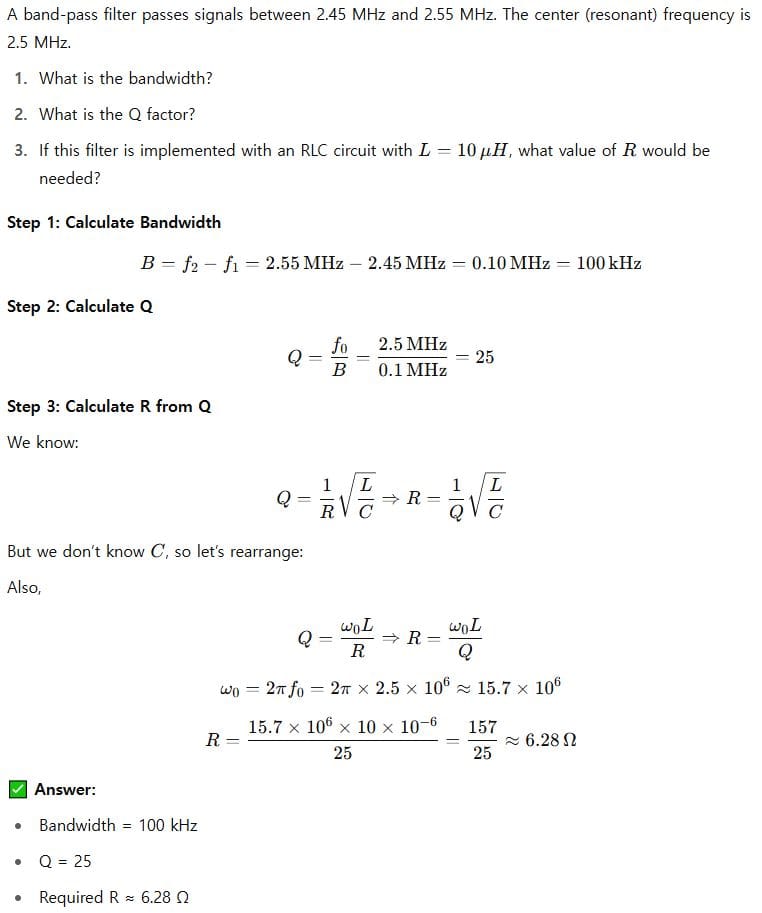Understanding Q Factor and Bandwidth in Resonant Circuits
If you’re diving into the world of electronics or RF systems, you’ve probably run across the terms Quality Factor (Q) and Bandwidth. These aren’t just buzzwords—they’re essential to understanding how resonant circuits behave, especially in applications like filters, amplifiers, and oscillators.
Let’s unpack these concepts in a clear, intuitive way, and then solve three problems that demonstrate how Q and bandwidth affect real-world circuit performance.
What is the Q Factor?
The Q factor, short for quality factor, tells us how “sharp” or “selective” a resonant circuit is. More technically, it indicates the ratio of energy stored to energy dissipated per cycle. A higher Q means the circuit is more selective—it resonates strongly at one frequency and rejects others.
Here’s the formula for Q:

What is Bandwidth?
Bandwidth (B) is the difference between the upper and lower cutoff frequencies of a circuit:

How Q and Bandwidth Are Related
The relationship between Q and bandwidth is inversely proportional. A higher Q means narrower bandwidth, which is perfect for applications like radio receivers or band-pass filters where precision matters.

If your circuit has a high Q, it will allow only a narrow band of frequencies through—everything else gets attenuated. If the Q is low, the response curve is broader and less selective.
Visualizing Resonance and Bandwidth
Imagine tuning a radio. A high-Q circuit would only let through a very narrow station frequency and filter out nearby noise. A low-Q circuit would let in a broader range and could pick up nearby interference.
🟢 Beginner Example
Problem:

🟡 Intermediate Example
Problem:

🔴 Advanced Example
Problem:

Why Does This Matter?
Understanding Q and bandwidth helps you design better filters, reduce signal loss, and avoid interference in high-frequency systems like radio, wireless comms, and even audio electronics.
In RF circuits, Q is a balancing act:
- High Q = high selectivity, but narrow response (good for filtering)
- Low Q = wide response, but less precision (better for broader tuning)
Final Thoughts
The quality factor and bandwidth are two sides of the same coin in resonant systems. They’re easy to calculate, but their implications can make or break your circuit’s performance. Whether you’re building a crystal-clear radio receiver or trying to sharpen the response of a sensor, knowing how to handle Q and B will put you ahead.
If you’re a student, try building an RLC circuit and measuring its response curve. The hands-on experience will solidify these concepts far better than any formula!

Leave a Reply